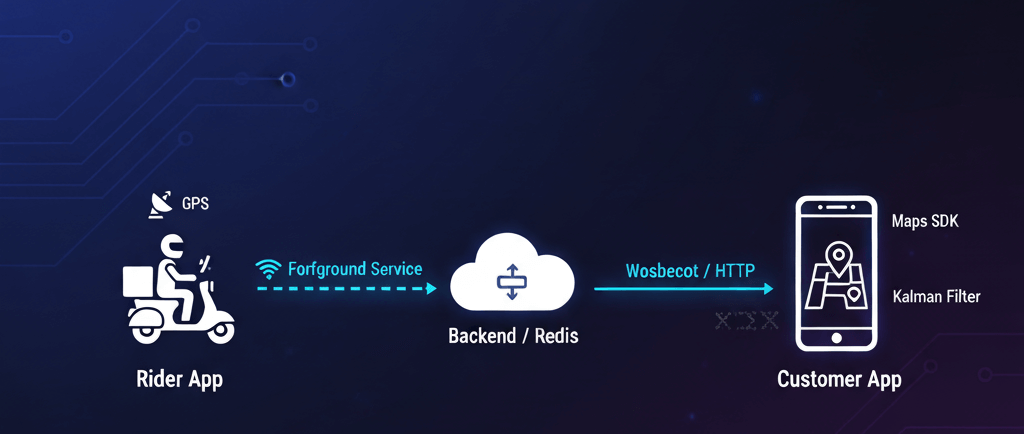30 STUDENTS ALREADY ENROLLED
Zomato Live Tracking System Design Explained (GPS, Redis, WebSocket)
Learn how Zomato live tracking works! Decode the system design behind food delivery apps: GPS, Foreground Service, WebSocket, and Redis for real-time location
10/14/20252 min read


Understanding Rider Location Tracking in Food Delivery Apps
Food delivery services like Swiggy, Zomato, and Blinkit rely heavily on GPS tracking to monitor riders’ live locations efficiently. This technology allows precise tracking of geographical coordinates, benefiting both delivery personnel and customers by providing real-time updates and minimizing delays.
GPS tracking helps customers follow their orders in real-time while also assisting riders in optimizing routes. Timely notifications and accurate updates enhance the overall user experience, ensuring orders reach customers promptly. Additionally, GPS tracking contributes to rider safety by enabling companies to monitor routes and encourage safer paths. Background tracking remains active through mobile permissions, allowing location updates even when the app is closed, ensuring operational efficiency.
The Role of the Rider's App
The rider’s app uses the Fused Location Provider (FLP), which integrates data from GPS, Wi-Fi, and cellular networks to determine accurate locations while conserving battery life. FLP ensures timely updates, even in areas with weak GPS signals.
During deliveries, the rider’s location is typically updated every few seconds. While continuous background tracking raises privacy concerns, accurate location data is essential for efficient delivery operations. Balancing operational needs with riders’ privacy preferences is crucial for maintaining trust and ensuring transparent use of data.
Foreground Services: Keeping the App Active
Foreground services are critical for delivery apps to function reliably when minimized or closed. These services maintain live tracking and display a persistent notification indicating active location updates.
Foreground services help applications navigate mobile operating system constraints, ensuring location data is transmitted reliably and improving overall user experience.
Data Transmission: From Rider to Server
Rider location data is transmitted to backend servers using REST APIs or WebSocket connections. The app periodically sends updates containing latitude, longitude, and timestamps. Encryption is employed during transmission to secure sensitive location data.
Real-Time Location Updates for Customers
For customers, real-time tracking enhances transparency and trust. By visualizing riders’ live locations on the map, users can anticipate delivery times more accurately. APIs facilitate this communication, providing frequent updates that support a seamless and satisfying user experience.
Challenges and Considerations
Despite its benefits, GPS-based tracking faces several challenges:
Accuracy Issues: GPS signals can be affected by buildings, weather, or poor network coverage.
Privacy Concerns: Continuous tracking in the background may raise concerns for riders. Companies must provide opt-out options and clearly communicate how data is used.
Battery Consumption: Continuous GPS use can drain the battery. Apps must be optimized to reduce power consumption without sacrificing update frequency.
The Future of Delivery Services and Location Tracking
The future of food delivery is increasingly tied to advancements in GPS technology and real-time tracking systems. Integration of IoT devices, AI, and machine learning can improve delivery efficiency by analyzing patterns, predicting optimal routes, and providing more accurate delivery times.
Enhanced tracking accuracy will foster greater trust between customers and delivery services, while innovations in mobile technology will continue to improve the reliability of location updates for both riders and users.
If you found this article insightful and want to read more about technology, mobile systems, and app development, follow Azim Siddiqui for regular updates and in-depth explanations.